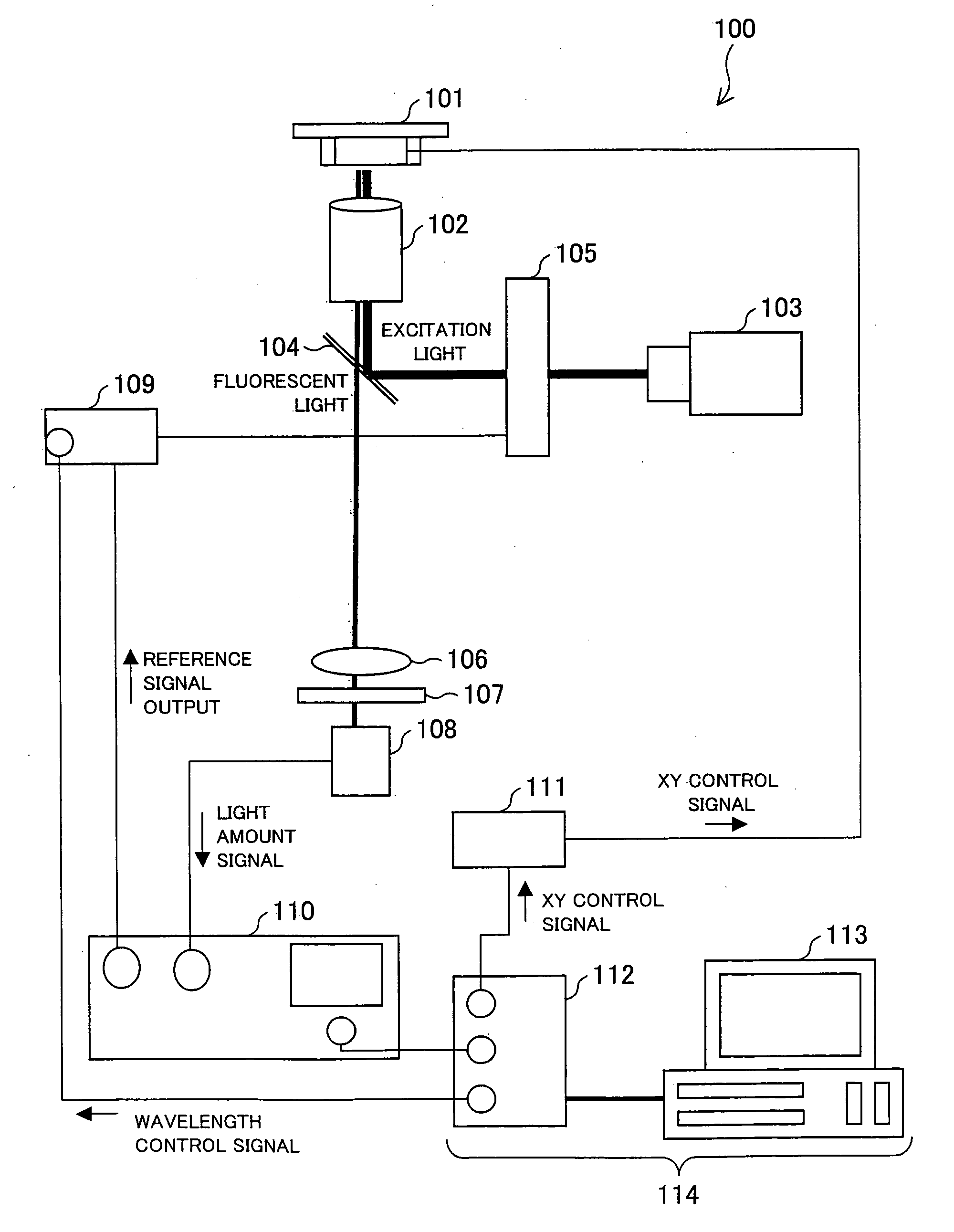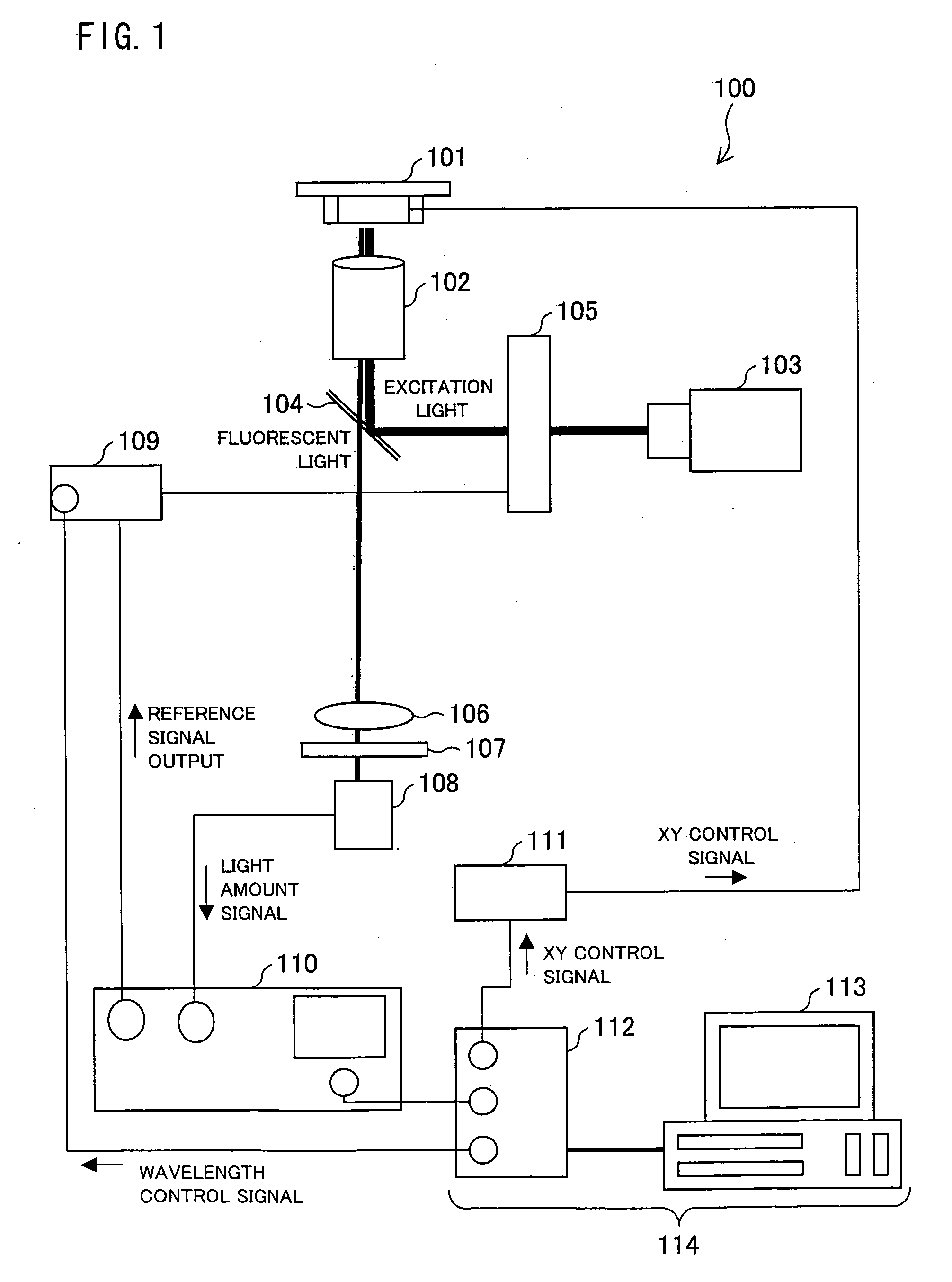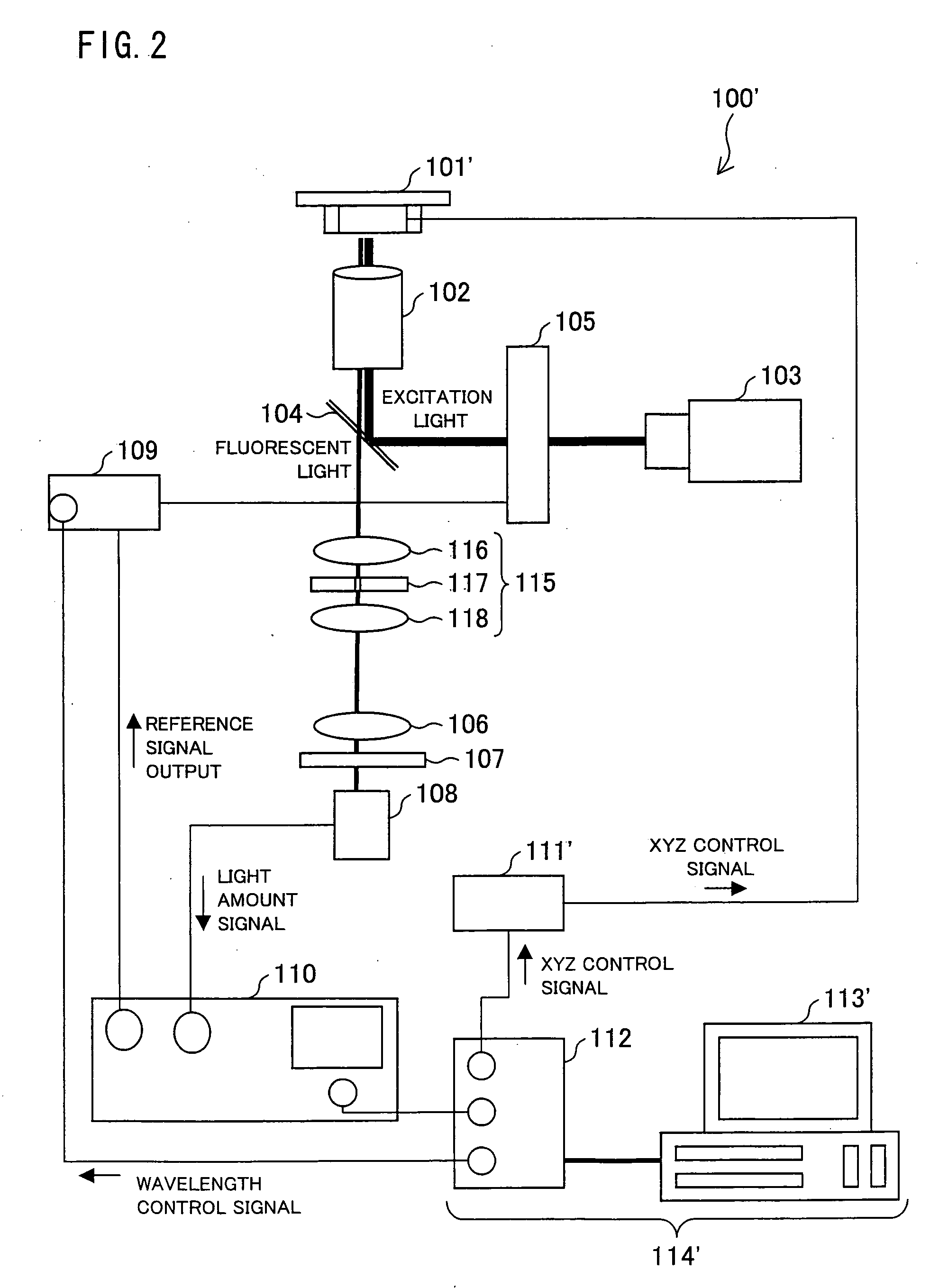Circular Dichroism Fluorescent Microscope
a fluorescent microscope and dichroism technology, applied in the field of circular dichroism fluorescent microscope, can solve the problems of inability to analyze such phenomena in a uniform experimental system in a test tube, inability to analyze the chirality of substances that exist in non-uniform environments, and inability to prepare a small amount of biomolecules
- Summary
- Abstract
- Description
- Claims
- Application Information
AI Technical Summary
Benefits of technology
Problems solved by technology
Method used
Image
Examples
reference embodiment 1
[0075]FIG. 1 is a diagram schematically illustrating a configuration of a circular dichroism fluorescent microscope 100 according to the present Reference Embodiment.
[0076]A circular dichroism fluorescent microscope 100 is a fluorescent microscope apparatus for two-dimensionally analyzing a fluorescence detected circular dichroism (FDCD) spectrum of a sample. Specifically, the circular dichroism fluorescent microscope 100 includes a sample stage 101, an optical lens 102, a light source 103, a wavelength selecting mirror 104, a circular polarizing modulating section 105, an optical lens 106, a wavelength selecting section 107, a fluorescence measuring section 108, a polarization controlling section 109, a detection controlling section 110, a stage controlling section 111, and a signal processing section 114.
[0077]The sample stage 101 is a drive stage that is arranged to be able to move two-dimensionally in XY directions, according to XY control signals from the stage controlling sect...
embodiment 1
[0108]Reference Embodiment 1 explains one embodiment of a circular dichroism fluorescent microscope for two-dimensionally analyzing a fluorescence detected circular dichroism spectrum. The present embodiment explains one embodiment of a circular dichroism fluorescent microscope that three-dimensionally analyzes a fluorescence detected circular dichroism spectrum by having a confocal microscope configuration. For convenience of an explanation, members having the same functions as those described in Reference Embodiment 1 are given the same reference numerals and the explanations thereof are omitted. The present embodiment explains a difference between the present embodiment and Reference Embodiment 1.
[0109]FIG. 2 is a diagram schematically illustrating a configuration of a circular dichroism fluorescent microscope 100′ in accordance with the present invention.
[0110]The circular dichroism fluorescent microscope 100′ is a fluorescent microscope for three-dimensionally analyzing a fluor...
reference embodiment 2
[0118]Each of Reference Embodiment 1 and Embodiment 1 explains one embodiment of a circular dichroism fluorescent microscope for two-dimensionally or three-dimensionally analyzing a fluorescence detected circular dichroism spectrum. The present embodiment explains one embodiment of a circular dichroism fluorescent microscope that can two-dimensionally analyze a circularly polarized luminescence dichroism (CPL) spectrum analysis. For convenience of an explanation, members having the same functions as those described in Reference Embodiment 1 and / or Embodiment 1 are given the same reference numerals, and the explanations thereof are omitted. The present embodiment explains a difference between Reference Embodiment 2 and the above Reference embodiment 1 and / or Embodiment 1.
[0119]FIG. 3 is a diagram schematically illustrating a configuration of a circular dichroism fluorescent microscope 200 in accordance with a present Reference Embodiment. The circular dichroism fluorescent microscope...
PUM
 Login to View More
Login to View More Abstract
Description
Claims
Application Information
 Login to View More
Login to View More - R&D
- Intellectual Property
- Life Sciences
- Materials
- Tech Scout
- Unparalleled Data Quality
- Higher Quality Content
- 60% Fewer Hallucinations
Browse by: Latest US Patents, China's latest patents, Technical Efficacy Thesaurus, Application Domain, Technology Topic, Popular Technical Reports.
© 2025 PatSnap. All rights reserved.Legal|Privacy policy|Modern Slavery Act Transparency Statement|Sitemap|About US| Contact US: help@patsnap.com



